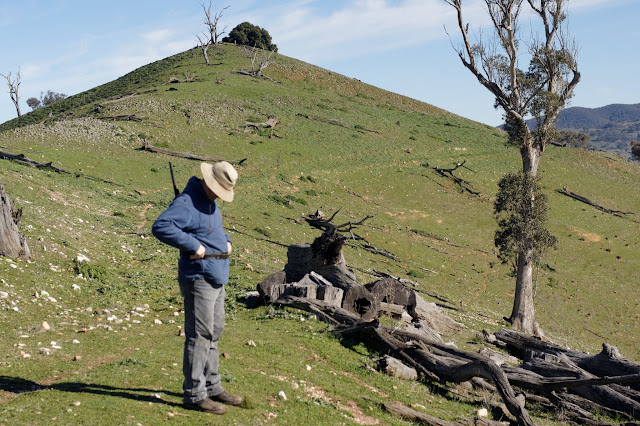mdv
Martin
First of all, please excuse the photo - my brother-in-law prefers to shoot foxes rather than fossick for gold. This basalt hill (on private property) has an old creek bed on the top section that is full of rounded quartz pebbles (but few larger stones/boulders, at least at the surface in the area above the basalt stone piles) and there are a couple of sample holes right on top from the gold rush days. I ran my detector across the top part but did not detect anything other than the odd 'hot rock'.
Is there a recommended method for how to prospect this type of area? Should I try more detecting or should I takes samples for panning? Where should I start, and what direction should the search follow? Is the absence of anything larger than pebbles in this old creek bed a bad omen for gold? Thanks for any suggestions.
The current creek is about 250m away down the valley to the right and was a significant source of gold during the early gold rush years (late 1851 - 1860).

As an aside, this hill was used as a hideout by the Ribbon Gang (led by convict Ralph Entwistle, later hanged) in 1830, and later named 'Bushranger Hill'.
Regards,
Martin
Is there a recommended method for how to prospect this type of area? Should I try more detecting or should I takes samples for panning? Where should I start, and what direction should the search follow? Is the absence of anything larger than pebbles in this old creek bed a bad omen for gold? Thanks for any suggestions.
The current creek is about 250m away down the valley to the right and was a significant source of gold during the early gold rush years (late 1851 - 1860).

As an aside, this hill was used as a hideout by the Ribbon Gang (led by convict Ralph Entwistle, later hanged) in 1830, and later named 'Bushranger Hill'.
Regards,
Martin



